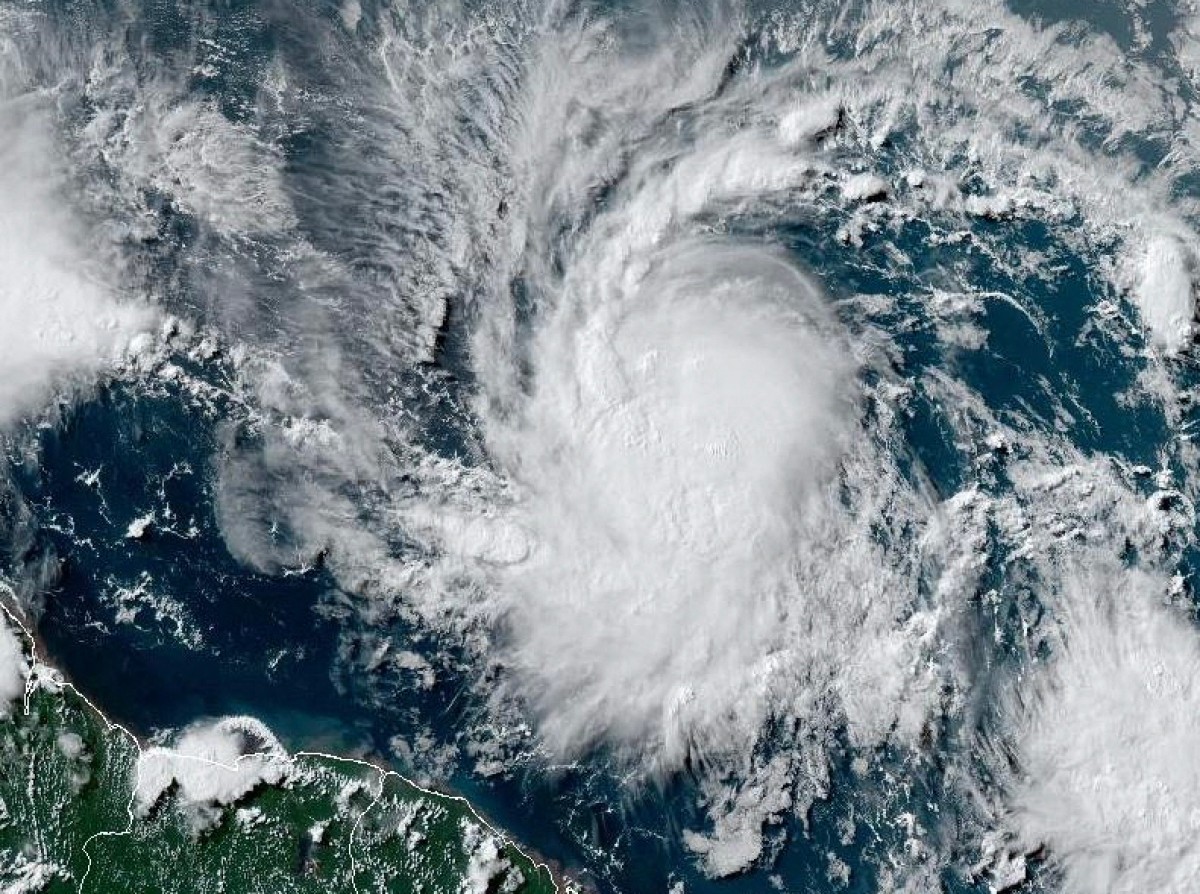National Hurricane Center Advisories and Updates

National hurricane center beryl – The National Hurricane Center (NHC) continues to monitor Hurricane Beryl as it approaches the coast of Florida. The storm has strengthened to a Category 2 hurricane with maximum sustained winds of 110 mph.
National Hurricane Center Beryl monitors the progress of Hurricane Beryl, which has made landfall in Florida. Read more about Hurricane Beryl in Florida for detailed updates on its path and impact. Stay informed and follow the National Hurricane Center Beryl for the latest advisories.
Current Location and Intensity
As of 11:00 AM EDT, Hurricane Beryl is located about 100 miles east-southeast of Jacksonville, Florida. The storm is moving northwest at 12 mph.
National Hurricane Center Beryl keeps an eye on Tropical Storm Beryl as it moves towards the Lesser Antilles. You can check out the beryl projected path for more information on its expected movement. The National Hurricane Center Beryl will continue to monitor the storm and provide updates as necessary.
Projected Path
The NHC’s latest forecast track shows Hurricane Beryl continuing to move northwest toward the Florida coast. The storm is expected to make landfall near Jacksonville late Monday night or early Tuesday morning.
Potential Impacts
Hurricane Beryl is expected to bring heavy rain, strong winds, and coastal flooding to the Florida coast. The storm could also produce tornadoes and rip currents.
Residents in the affected areas should take precautions and follow the instructions of local officials.
Hurricane Preparedness and Safety

Hurricanes can be devastating natural disasters, but by taking the necessary precautions, you can help protect yourself and your family.
There are a number of things you can do to prepare for a hurricane, including creating an emergency plan, gathering essential supplies, and knowing where to evacuate if necessary.
Creating an Emergency Plan
- Decide where you will go if you need to evacuate your home.
- Identify multiple evacuation routes in case your primary route is blocked.
- Make a list of important contacts, including family members, friends, and emergency services.
- Keep a copy of your emergency plan in a safe place, such as a waterproof bag.
Gathering Essential Supplies, National hurricane center beryl
- Food and water for at least three days.
- First-aid kit.
- Battery-powered radio and flashlights.
- Extra batteries.
- Whistle to signal for help.
- Cash in small denominations.
Evacuation Procedures
If you are ordered to evacuate your home, do so immediately.
Follow the instructions of local officials and emergency responders.
If you are unable to evacuate, stay indoors and away from windows.
Hurricane Tracking and Forecasting: National Hurricane Center Beryl

The National Hurricane Center (NHC) uses a variety of methods to track and forecast hurricanes. These methods include:
Satellite imagery: Satellites provide real-time images of hurricanes, which can be used to track their movement and intensity. Satellite imagery can also be used to identify the location of the hurricane’s eye, which is the center of the storm.
Aircraft reconnaissance: Aircraft are flown into hurricanes to collect data on their wind speed, pressure, and temperature. This data is used to improve the accuracy of hurricane forecasts.
Radar: Radar can be used to track the movement of hurricanes and to identify areas of heavy rainfall.
Computer models: Computer models are used to forecast the movement and intensity of hurricanes. These models take into account a variety of factors, including the hurricane’s current location, the wind speed, the pressure, and the temperature of the ocean water.
Types of Hurricane Forecasts
The NHC issues a variety of hurricane forecasts, including:
- Tropical Weather Outlooks: These outlooks are issued when there is a potential for a tropical cyclone to develop within the next 48 hours.
- Tropical Cyclone Advisories: These advisories are issued when a tropical cyclone has formed. They provide information on the cyclone’s location, movement, and intensity.
- Hurricane Watches: These watches are issued when there is a possibility that a hurricane will threaten a particular area within 48 hours.
- Hurricane Warnings: These warnings are issued when a hurricane is expected to threaten a particular area within 36 hours.
Accuracy and Limitations of Hurricane Forecasting Models
Hurricane forecasting models are not always accurate. The accuracy of these models depends on a variety of factors, including the quality of the data that is available, the complexity of the model, and the skill of the forecaster.
The limitations of hurricane forecasting models include:
- The models can be inaccurate if the data that is available is incomplete or inaccurate.
- The models can be complex and difficult to interpret.
- The skill of the forecaster can affect the accuracy of the forecast.